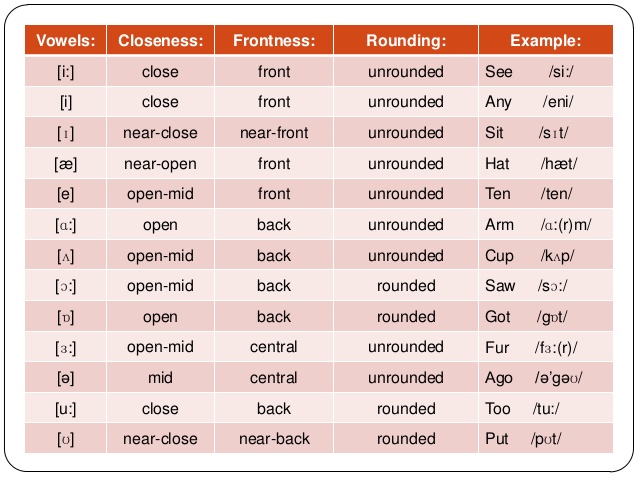
#OPEN VOWEL SOUNDS PLUS#
We transcribe all of them as a vowel plus /r/, except for NURSE which has its own special symbol, used to indicate an “R-colored vowel.” We can also think of the NURSE vowel in GenAm as a syllabic /r/. Since GenAm has retained the /r/ sound in all positions, this subset of vowels is quite large. GenAm’s distribution of diphthongs is identical to SSBE’s, but one minor difference is the transcription of the GOAT vowel : Here it starts with a much rounder vowel sound. Also, notice that the DRESS vowel is written with a different symbol in GenAm than in SSBE because the GenAm vowel tends to be much more open. More or less the same as SSBE, GenAm’s system of short vowels differs only in that there is no difference between the sets TRAP and BATH, so the words “gas” and “grass” are perfect rhymes. General American English has 21 distinct vowel phonemes. But once you become aware of it, you’ll notice it everywhere. It can be tricky to see at first because the knowledge of spelling often overrides our perception of a spoken sound. The weak vowel is also known as a schwa, and it just so happens to be the most common vowel sound in English. This left a set of vowel sounds which are still written with the letter R in spelling, but have no remnant of the /r/ sound in them in this accent. With historical /r/ Lexical setĪs mentioned above, since SSBE lost all /r/s that were not before vowel sounds, all syllable-final /r/s are dropped in pronunciation too. The same spelling can represent distinct vowel pronunciations, and in reverse, the same pronunciation can be represented by multiple spellings. Here we can see more examples of how spelling is not a reliable indicator of how many vowel sounds English has. This is a reliable way to tell it apart from the STRUT vowel, which many English learners confuse it with. The one thing that remains constant is the TRAP vowel, which is always spelled with a letter A.
#OPEN VOWEL SOUNDS FULL#
Here’s the full list, with their relevant lexical sets below: Standard Southern British English has 19 distinct vowel phonemes. Vowels In Standard Southern British Englishįrom this point, we’ll reference lexical sets and the International Phonetic Alphabet quite a bit, so a little background or research on these topics will be helpful for following along. Finally, weak vowels are like short vowels, except they can never appear in a stressed syllable and they can end a syllable. This is especially true because our two reference accents differ on this a lot, as SSBE has lost all traces of historical R when not at the beginning of a syllable. Meanwhile, vowels before historical R have undergone many changes in the history of English, and so this is an important category to consider. Next, diphthongs are vowel phonemes that begin as one vowel sound and slide into another, but still only make up one syllable.

First, the distinction between short and long vowels is pretty self-explanatory.

Types Of Vowelsįrom here, we can divide English vowel sounds up into a couple of categories: short vowels, long vowels, diphthongs, vowels before historical R, and weak vowels.


However, this description can also include sounds like the W in “with,” the Y in “year” and the R “red.” But these are not vowels because they lack the vital characteristic that all vowels have in common: Vowels are syllabic, meaning they can be a syllable all on their own. From there, we typically modify these sounds with our vocal cords, mouth and lips to produce distinct vowel sounds. Technically speaking, vowels are produced by releasing air from the lungs through the oral and/or nasal cavity. In order to count the number of English vowel sounds, we need to know what counts as a vowel. This makes it one of the most complex vowel systems of any language in the world. Other English accents will have a slightly different number of vowel sounds, but generally speaking, English has around 20 distinct vowel phonemes. In this article, we’ll use Standard Southern British English (SSBE) and General American English (GenAm) as our reference accents. There are many more distinct English vowel sounds (or phonemes) that can make the difference between otherwise similar words.Įxactly how many vowel phonemes English has depends on which variety of the language we’re talking about. Sometimes we count Y, too - so maybe six? While this might be true about the written language, it’s not the case for spoken English. English has five vowels, right? A, E, I, O and U.


 0 kommentar(er)
0 kommentar(er)
